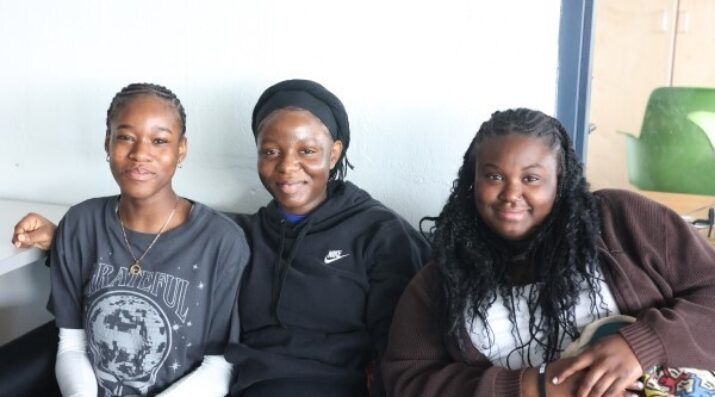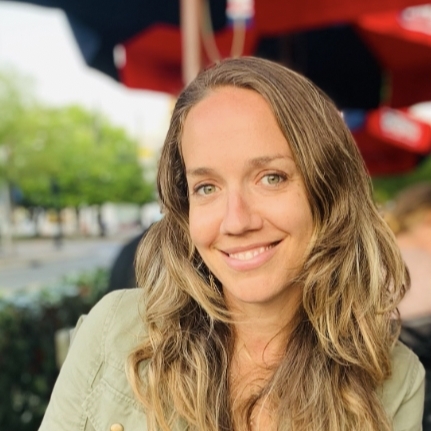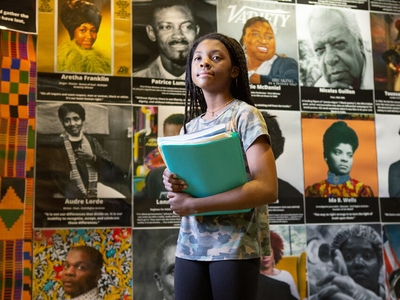Designing for Equity
Teachers Need More Support Reaching Multilingual Learners. Here’s How.
Topics

Together, educators are doing the reimagining and reinvention work necessary to make true educational equity possible. Student-centered learning advances equity when it values social and emotional growth alongside academic achievement, takes a cultural lens on strengths and competencies, and equips students with the power and skills to address injustice in their schools and communities.
Linguistically responsive educators have asset-based mindsets, understand how languages function, recognize specific language needs of multilingual learners, and differentiate instruction.
Reimagine Success for MultiLingual Learners with NGLC's 2025-26 BRAVELY! Small grants and a year of research-based supports provided.
APPLY BY MAY 5, 2025
Day one of my teaching career, I thought I was fully prepared. My pencils were all sharpened, my lesson plans were tight, and my classroom was a work of first-grade-style art. And then the first student that walked through the door, Marcos, smiled sweetly at me as I realized he wasn’t understanding any of my words. No one told me about this! How did I miss it?
Teachers in the U.S. are wildly underprepared to support multilingual learners (MLLs). While MLLs are the fastest-growing student subgroup, less than one-third of new teachers have received any level of training on how to support these students. Now, many districts are beginning to understand the nuanced, diverse needs and contexts of MLL education. Only about half of the states require specific qualifications or pre-service training on teaching MLLs for general education teachers. All districts, regardless of their state policy, must take a hard look at how they are equipping educators with the knowledge and skills to serve linguistically diverse students. And the good news is, we know what works to change outcomes for MLLs at scale.
What do new teachers need to know about MLLs?
While many states and districts are working to train teachers to become culturally responsive educators, we must also help teachers become linguistically responsive educators. As scholars Dr. Tamara Lucas and Dr. Ana Maria Villegas describe it, being a linguistically responsive teacher involves building up asset-based mindsets, understanding how languages function, recognizing the specific language needs of multilingual learners, and being able to appropriately differentiate instruction. While great teachers of MLLs have the foundational skills of all great teachers, they need specific mindsets, knowledge, and skills to effectively support MLLs.
What does this look like in teacher training?
As the department chair for culturally and linguistically diverse learners at Relay Graduate School of Education, I’ve witnessed how our institution has recently evolved its approach. Over the last several years, we learned from the teachers and district leaders who demonstrated best practices for supporting MLLs and from states like Colorado that increased their expectations for teacher licensure. Since 2022, Relay has implemented a new curriculum that quadruples the amount of classes focused on culturally and linguistically diverse learners that are required for all teachers. This change impacted over 2,000 Relay-trained teachers across 10 states.
At Relay, the coursework is structured around the “linguistically responsive teaching” framework.
This means three things:
- Mindsets: Linguistically responsive teachers understand the connection between language, culture, and identity. At Relay, teachers spend ample time exploring their beliefs and engaging with videos, case studies, historical data, socio-political implications, and self-reflection. For example, teachers might experience an exercise in which their professor shows up to class speaking Greek! Teachers reflect on how it felt and what they did to cope with being in an environment where they couldn’t understand the language. This builds empathy and deep understanding of students' learning process.
- Knowledge: Linguistically responsive teachers have a foundational understanding of language acquisition theory, can identify the language demands of classroom tasks, and can apply key principles of second language learning. For example, at Relay, teachers watch interviews with students and practice analyzing their oral language to identify where students show linguistic assets and where they require targeted language scaffolds.
- Skills: Linguistically responsive teachers are well-equipped with strategies to support their MLLs in the classroom. At Relay, teachers practice selecting strategies that target the specific language needs of their students, and actually “stand and deliver” those strategies with their colleagues. For example, in a graduate-level Relay class, teachers might practice vocabulary instruction using gestures with a group of their “students” in breakout rooms. While these strategies benefit all students, they are crucial for our multilingual learners.
What do experienced teachers need to know about MLLs?
New teachers need high levels of training to be linguistically responsive teachers, but we must not forget the needs of experienced teachers. Experienced teachers certainly share a desire to see all students succeed, and they also benefit from support in mindsets, knowledge, and skills as outlined above. In addition, they may require special attention to unlearning current mindsets or retiring outdated practices. Experienced teachers benefit specifically from deepening their understanding of how language is acquired and matching strategies more precisely to specific linguistic areas of growth. They can leverage their deeper experience with the curriculum, classroom culture, and working with learning differences to build students’ background knowledge as a foundation for comprehension or to analyze students’ linguistic skills ever more precisely than a new teacher can. Experienced teachers will especially benefit from job-embedded PD that allows them to problem-solve, practice, observe, and model new strategies with other educators.
Supporting MLLs is good for all students.
Preparing both new and experienced teachers to become linguistically responsive educators poses a set of complex challenges and can feel overwhelming. However, districts don’t need to do this on their own; they can partner with teacher certification programs and ongoing professional development offerings that provide this level of training.
The good news about these shifts is that they will have rippling effects on all students. All students are acquiring the academic language of school; when teachers teach the language of mathematics or the language of science, they are teaching language. All teachers need to perceive themselves as teachers of language. When we invest in improved language instruction for all teachers, we yield a strong return for all students.
When our Relay teachers share that they have a student like Marcos in their class, they do not panic. They simply share that he’s in the “pre-production” stage of language acquisition and they dig into their toolkit of strategies. I am heartened to know that we’re helping the next generation of teachers to be just a bit more prepared on day one to provide students like Marcos the instruction and support they need to succeed.
Photo at top courtesy of NGLC: Students of Winooski High School in Vermont.




